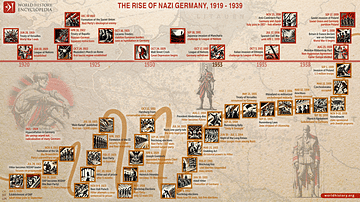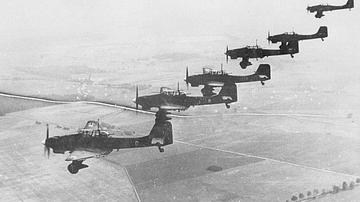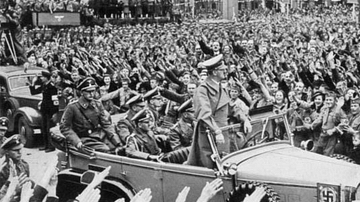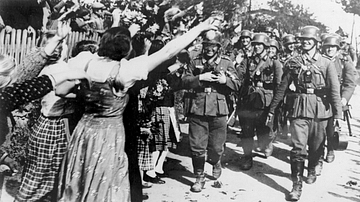Illustration
A map illustrating the growing instability in Europe in the lead-up to World War II, capturing the aggressive territorial expansion of Nazi Germany and the failure of appeasement. Between 1935 and 1939, a series of bold geopolitical moves by Adolf Hitler reshaped the European landscape and set the stage for global conflict.
The sequence began with the Saarland’s return to Germany in 1935 following a plebiscite, followed by the remilitarization of the Rhineland in 1936—both direct violations of the Treaty of Versailles. In March 1938, Germany annexed Austria in the Anschluss, and by September had coerced Britain and France into accepting the cession of the Sudetenland from Czechoslovakia through the Munich Agreement. In March 1939, Hitler occupied the rest of Czechoslovakia, further exposing the limits of diplomatic appeasement. That August, the Molotov-Ribbentrop Pact—a non-aggression agreement between Nazi Germany and the Soviet Union—shocked the world and secretly divided Eastern Europe into spheres of influence. On September 1, 1939, Germany invaded Poland, triggering declarations of war by Britain and France and plunging Europe into the Second World War.
About the Author
External Links
Cite This Work
APA Style
Netchev, S. (2024, March 18). Europe on the Eve of WWII, 1939. World History Encyclopedia. Retrieved from https://www.worldhistory.org/image/18715/europe-on-the-eve-of-wwii-1939/
Chicago Style
Netchev, Simeon. "Europe on the Eve of WWII, 1939." World History Encyclopedia. Last modified March 18, 2024. https://www.worldhistory.org/image/18715/europe-on-the-eve-of-wwii-1939/.
MLA Style
Netchev, Simeon. "Europe on the Eve of WWII, 1939." World History Encyclopedia. World History Encyclopedia, 18 Mar 2024. Web. 14 Apr 2025.








